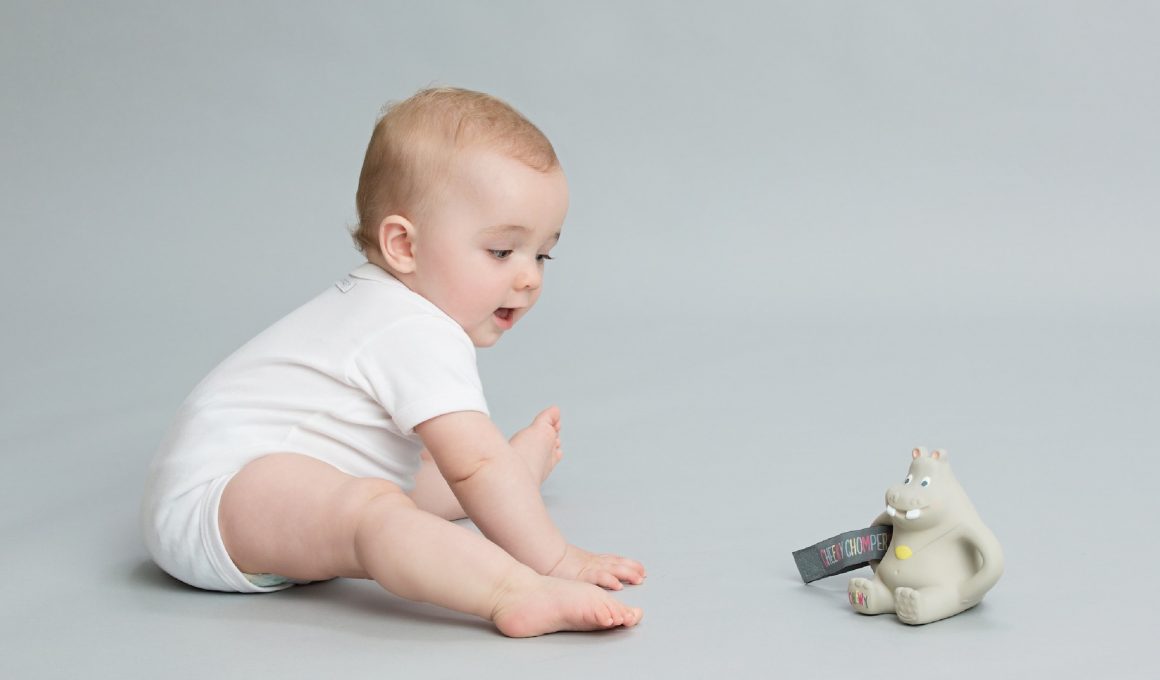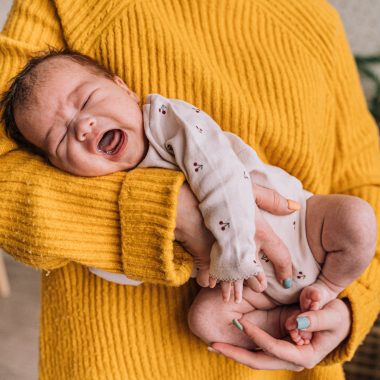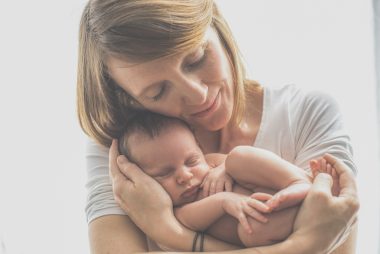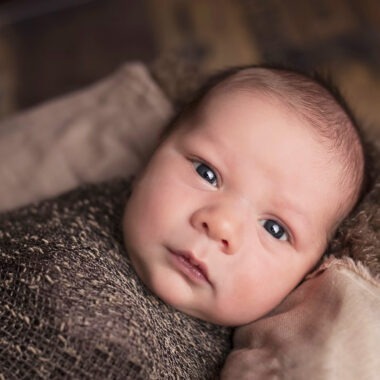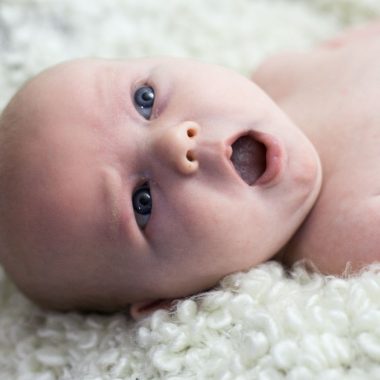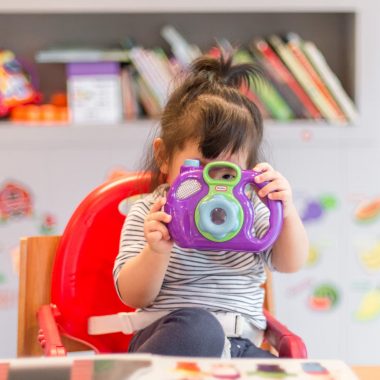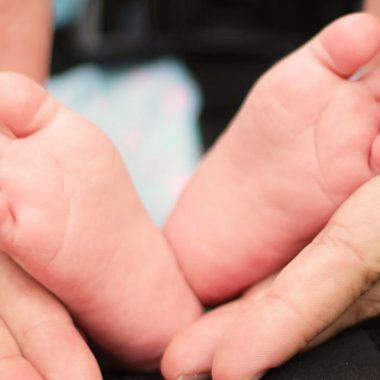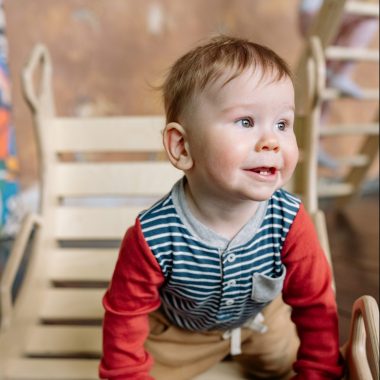Developmental milestones are a set of behaviors, skills, or abilities that mark stages of typical development. They are often presented in lists broken down by age, beginning around 1–3 months and progressing through approximately 5 years of age.
Skills such as taking a first step, smiling for the first time, sitting without support, moving an object from one hand to the other and waving “bye-bye” are called developmental milestones. Children reach milestones in playing, learning, speaking, acting, and moving.
As experts say, all milestones build upon one another. This means a baby can’t walk if they can’t pull themselves up. They can’t speak in sentences if they don’t have simple words.
You can see your child reach milestones every day. Most babies and children reach developmental milestones at or about the same age.
But you should always keep in mind that every baby is unique. Every baby develops at their own pace and there is a range for when children achieve their baby developmental milestones.
To better reflect this, the Centers for Disease Control and Prevention (CDC) and American Academy of Pediatrics (AAP) adjusted their milestones guidelines in February 2022.
Why are developmental milestones important?
Children learn more during their first 5 years than at any other time of their life.
While all babies grow and develop at different rates, tracking how they reach “milestones” along the way is one method to assess their progress. This means that you can think of developmental milestones as a checklist of your baby’s development.
Reaching milestones at typical ages shows that your child is developing as expected.
Not reaching milestones or reaching them later than other children of the same age can be the earliest indication that a child may have a developmental delay. But this can only be detected by a specialist through some tests.
Children who don’t reach milestones may need extra support and services to reach their full potential.
As we mentioned before, you should always keep in mind that developmental progress is not always steady. All children develop at their own pace.
Additionally, the developmental progress of one child can differ in itself, too. You can see changes in development during important life events like the birth of a new sibling, a divorce, moving from one place to another and so on.
Types of developmental milestones
There are four basic categories for developmental milestones. Most parents and health care specialists keep track of these developmental areas.
Physical milestones
Physical milestones involve both large and fine motor skills.
- Gross motor skills which include sitting, standing, crawling, and walking develop first.
- Fine motor skills which involve precise movements like grasping a spoon, holding a crayon, and picking up small objects develop later on.
Cognitive milestones
Cognitive milestones are about a child’s ability to think, learn, explore and solve problems. An infant learning to imitate facial expressions, recognize familiar faces and a preschooler learning the alphabet are examples of cognitive milestones.
In the past, adults often dismissed the remarkable intellectual skills of infants and very young children. But today we know that even a newborn is actively taking information and learning new things as discovered by researchers. In addition to gathering new information about the people and the world around them, babies constantly discover new things about themselves.
Cognitive milestones represent important steps in a child’s development.
Social and emotional milestones
Smiling and responding to you, making eye contact, calming down when held by a familiar adult are examples to social and emotional milestones.
Social and emotional milestones are about a child’s ability to express their emotions effectively, follow rules and directions, form positive relationships with others, and build confidence.
As the child grows socially and emotionally, they begin to create more meaningful relationships with others. A child’s experiences with parents, friends, family members, teachers, and more all contribute to their social and emotional development.
Communication milestones
These milestones involve both language and nonverbal communication.
A one-year-old learning how to say their first words and a five-year-old learning some of the basic rules of grammar are examples of important communication milestones.
Communication is the cornerstone of healthy relationships. It is a way for sharing our joy, fear, and other emotions. A baby learns communication by watching the people around them.
Developmental milestones month by month
Below you will read important developmental milestones of a baby month by month.
1 month old baby
At month 1, cuddling, sleeping and feeding are all that really matter to your baby.
The time you spend with your baby will help their brain grow and develop as they start to experience the world.
At 1 month, most of what babies do is still caused by reflexes.
A month old baby,
- Recognizes faces.
- Sees bold patterns, especially in black and white.
- Recognizes the sound of your voice.
- Brings hands within range of their eyes and mouth.
- Moves their head from side to side.
- Grasps their fists tightly.
2 month old baby
This is a very exciting developmental time. Now your baby is opening the eyes, stretching the legs and breaking out into the cutest of smiles. They are more communicative.
They may be starting to smile when they see you and will start cooing.
A 2 month old baby,
- Holds their up when lying on their stomach.
- Moves both arms and legs.
- Opens hands briefly.
- Watches you as you move.
- Looks at a toy for several seconds.
- Begins to follow things with their eyes and recognizes people at a distance.
- Briefly calms themselves (may bring their hands to their mouth to self-soothe) when spoken to or picked up.
- Looks at your face.
- Seems happy to see you when you walk up to them.
- Smiles when you talk to or smile at them.
- Starts to coo and make sounds beyond a simple cry
- Turns their head in the direction of sounds.
3 month old baby
Time is flying and your baby is about to complete the first quarter of their first year.
Your baby is still getting to know the outside world and has reached a number of milestones, such as tracking objects with their eyes, reaching and grasping for things with their hands, and pushing up on their arms when lying on their tummy.
As always, respond positively to your baby. Talk, read and sing to them to help them develop. To make them feel safe and cared for, spend time cuddling and holding your baby.
A 3 month old baby,
- Starts lifting their head and chest up from a belly-down position.
- May be able to hold objects for longer periods of time and may be able to start shaking them.
- Can distinguish your face from others.
- Starts to have different cries for different needs (hunger, diaper change, pain, etc.).
- Opens and shuts their hands.
- Swipes at dangling objects.
- Follows moving objects with their eyes since they have a better eye-muscle control.
- Enjoys playing with other people (and may cry when the playing stops).
- Continues to expand and refine their vocal skills, cooing and even starting to babble.
- May begin imitating sounds they hear.
- Will turn toward whoever is speaking.
4 month old baby
Your baby is becoming more alert and eager to explore the world around them.
At the 4 month period, some major brain and physical developments take place. Your baby’s vision is improving and they are becoming more social. Experts say that your 4 month old baby is coming out of their shell. Their personality and improved physical abilities stand out.
A 4 month old baby,
- Holds head steady without support when you are holding them.
- Holds a toy when you put it in their hand.
- Uses their arms to swing at toys.
- Brings hands to mouth.
- Pushes up onto elbows/forearms when on tummy.
- If hungry, opens mouth when they see breast or bottle.
- Looks at their hands with interest.
- Smiles on their own to get your attention.
- Chuckles when you try to make them laugh.
- Looks at you, moves, or makes sounds to get or keep your attention.
- Copies facial expressions.
- Makes sounds like “oooo”, “aahh” (cooing)
- Makes sounds back when you talk to them.
- Turns head towards the sound of your voice.
5 month old baby
Your 5 month old baby is practising motor skills every day and showing off their unique personality. They are starting to gain more control over their body and they are getting more vocal.
A 5 month old baby,
- May be rolling two different ways: From tummy to back and back to tummy.
- Holds their head up without support.
- Pushes onto their elbows from tummies.
- May even push up into a sitting position when they get closer to the 6-month mark.
- Has the ability to reach and grab objects.
- Passes objects from one hand to the other.
- Focuses on objects without crossing their eyes.
- Is getting ready to crawl.
- May show interest in solid foods.
- May hold out arms to be picked up.
- Responds to sounds with their own sound.
- May be becoming more aware of strangers.
6 month old baby
At this age your baby may be ready to start accomplishing some huge developmental milestones including those associated with mobility.
Month 6 brings so many exciting changes.
Your baby gets more engaged and curious. Laughs and babbles. May show readiness for solid foods. They may even start sleeping longer stretches. Some of the bigger milestones of a 6 month old baby involves movement and language
A 6 month old baby,
- Rolls over from tummy to back (some babies may accomplish this earlier).
- Pushes up with straight arms when on tummy.
- Leans on hands to support themselves when sitting.
- Starts creeping along the floor.
- Passes things from one hand to the other.
- Reaches for toys they want.
- Explores toys by putting them in their mouth.
- Closes lips to show they don’t want more food.
- Knows familiar people as well as knows who is a stranger.
- Makes noises to show their joy and displeasure and may start to say consonant sounds as well.
- Loves to look at themselves in a mirror.
- Starts to understand simple words.
7 month old baby
As your baby turns 7 months old, they are building on what they were doing at month 6.
For instance they are likely to become a professional at sitting up, reaching for and grabbing toys they want.
Your baby is becoming a little scientist and manipulating surrounding objects to learn more about them. They can drop things onto the floor as an encouraging sign of your baby’s curiosity.
A 7 month old baby,
- Sits up without support.
- Bears weight on their legs when you hold them upright, and might even start to jump up and down in this position.
- Enjoys dropping things on the floor.
- May start to copy sounds and gestures of others.
- Can process and understand a wide range of sounds.
- Finds partially hidden objects.
- Improves in distance vision and sees everything in full color.
8 month old baby
At this age your baby is becoming very mobile. Not only are they moving in some way (possibly even crawling), they are also becoming more vocal making different vowel and consonant sounds as well as responding with inflection based on their mood.
They also continue to explore the world around them by bringing things to their mouths. Your baby is getting bigger and stronger.
An 8 month old baby,
- Rocks back and forth on hands and knees.
- Sits unassisted.
- Passes objects from one hand to the other.
- May start to lean over to pick up toys.
- Picks up objects between the thumb and forefinger (pincer grasp).
- Pulls into a standing position near furniture.
- Recognizes familiar faces.
- Makes sounds back when talked to.
- Understands basic words.
9 month old baby
Your baby is developing a number of skills like crawling, cruising, and mastering the pincer grasp.
They also are expanding their language and communication skills. Your babbling baby may start to experiment with different tones and sounds. Experts say not to worry if you aren’t hearing that “mama” or “dada” since not all children talk at the same time.
They may shake their head “no” and point to things they want.
During the 9 month period, many changes take place and you may feel like something new is happening every day.
Your baby will be very active with their hands and voice.
They will become more mobile and may start to test their standing and walking skills. They might cruise around furniture or enjoy walking and standing while you are holding their hands. So if you haven’t baby-proofed your house before, now is the exact time to do so.
A 9 month old baby,
- Gets into a sitting position without help and sits unaided.
- Uses fingers to bring food towards themself.
- Begins to understand object permanence and looks for objects when dropped out of sight (like their spoon or toy).
- Bangs two things together.
- Is shy, clingy, or fearful around strangers.
- Has favorite toys.
- Shows several facial expressions, like happy, sad, angry, and surprised.
- Looks when you call their name.
- Reacts when you leave (looks, reaches for you, or cries).
- Smiles or laughs when you play peek-a-boo.
- Makes a lot of different sounds like “mamamama” and “bababababa”.
- Lifts arms up to be picked up.
10 month old baby
During this month, your baby is getting stronger in preparation for walking.
They move around their environment by crawling, cruising, and pulling to a stand.
They imitate speech sounds, respond to the word “no”, and may say a few words. They also are getting better at using their hands.
Object permanence is much more developed at this age.
A 10 month old baby,
- Walks with you holding their hands.
- May take a step or two.
- Stands up unassisted.
- Drinks from a cup held for them.
- Begins feeding themselves (finger food), thanks to better hand-eye coordination.
- Develops specific preferences for tastes and textures.
- Waves bye-bye.
- Looks when name is called.
- Shows curiosity and explores how things work.
- Develops separation anxiety.
- Understands simple one-word phrases or requests.
11 month old baby
Your baby is moving on to developing gross motor skills like standing and walking. They are also making strides in communication by saying one or two words and gesturing with their hands.
Your baby is more mobile and more communicative.
An 11 month old baby,
- Crawls up the stairs (always make sure they are supervised).
- Stands for a few seconds.
- Waves and/or claps.
- Throws objects.
- Finds toys when hidden.
- Vocalizes to songs.
- Makes sounds with changes in tone (sounds more like speech).
- Bounces to music.
12 month old baby
Your baby accomplished so much during their first year. They did quite a lot in 12 months.
Now your baby can fine-tune their motor skills and verbally express themselves in simple words and sounds.
Their hearing is now super-accurate, and they listen with closer attention than they used to.
Your baby loves feeling different textures and cool sensations such as the feeling of water pouring from cup to cup in the bathtub.
Your baby continues to feel everything with their hands and mouth. They love to look and listen at the same time, making reading books real fun and interesting.
A 1 year old baby,
- Pulls up to stand and may be able to stand alone.
- Starts cruising (shuffling along while holding onto furniture).
- Can pick things up (like small bits of food) between thumb and forefinger (pincer grasp).
- Starts to use things correctly; for example, drinks from a cup or brushes their hair.
- Puts something in a container, like a block in a cup.
- Looks for things he sees you hide, like a toy under a blanket.
- Plays games with you, like pat-a-cake.
- Uses basic gestures, like shaking their head “no” or waving “bye-bye”.
- Begins to respond to “no”.
- Says “mama” and “dada” and exclamations like “uh-oh!”.
References: myclevelandclinic.com, healthychildren.org, verywellfamily.com, verywellmind.com, pregnancybirthbaby.org.au, webmd.com, cdc.gov, thebump.com


